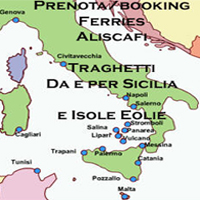
The volcanoes
The volcanic activity of the Aeolian Islands On the other islands are found only modest activities fumarolic and esalative, while the seismic activity that characterizes them is much lower than the most active volcanic areas. The last eruption of Lipari dates back to 580 BC, while a volcano is the most recent eruption occurred in 1888-1890. […] ... Continue Reading →

The plant landscape of the Aeolian islands
The formation of the Aeolian Islands took place during the last 500,000 years (second the last datings made by volcanologists) and, unlike many Mediterranean islands, total autonomy in relation to land nearby, with which the archipelago seems not be ever came into contact area. The populations of plants and animals that are hosted in Aeolian […] ... Continue Reading →

The fauna of the Aeolian Islands
The formation of the main volcanic Aeolian arch took place during the last 500,000 years (second the last datings made by volcanologists) and, unlike many Mediterranean islands, total autonomy in relation to land nearby, with which the archipelago seems not be ever came into contact area. The populations of plants and animals that are hosted in […] ... Continue Reading →

VIRTUAL FLIGHT Aeolian Islands
VIRTUAL FLIGHT Aeolian Islandsbased on the 3D model Requires Internet Explorer Browser for best performance For plugin Blaxxun Contact click here For IOS (MAC) see this link ... Continue Reading →

The Aeolian Islands in the international cinema
“Vulcano”
Director William Dieterle
with Anna Magnani
(1949)
“Stromboli, Stromboli, terra di Dio”
Director Roberto Rossellini
with Ingrid Bergman
(1949) ... Continue Reading →
The Archaeological Museum in Lipari
SECTION I It is located in the ancient palace of the bishops, next to the Cathedral, built in the seventeenth century. Materials of the excavations of the Acropolis of Lipari ROOM I – On display are the materials of the two older stages of the Neolithic Eoliano. ROOM II – Materials of the third and […] ... Continue Reading →

Aeolian in the Unesco World Heritage list
According to the World Heritage Convention, for cultural heritage means a monument, group of buildings or site of historical, aesthetic, archaeological, scientific, ethnological or anthropological. The natural heritage, however, indicates relevant physical, biological, and geological, as well as the habitat of endangered plant and animal species and areas of particular scientific and aesthetic value. The […] ... Continue Reading →



